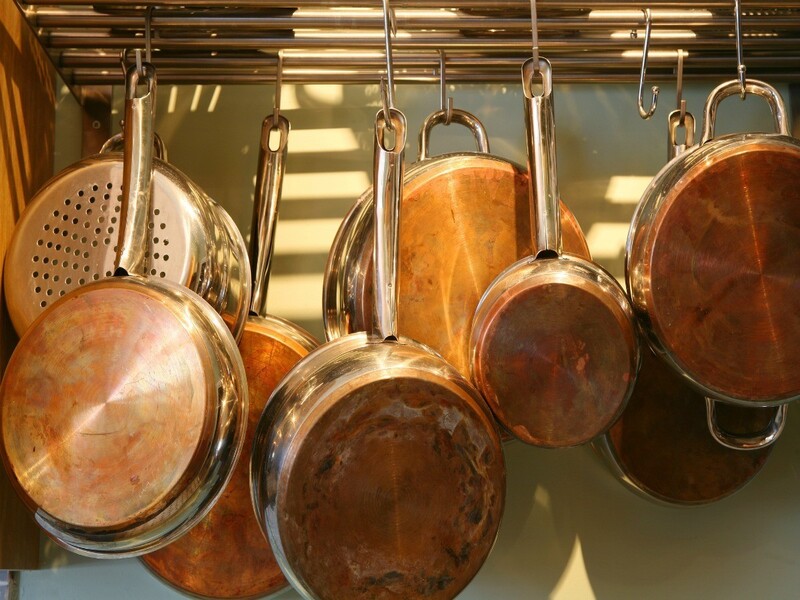The kitchen has always been the heart of the home, evolving with the very being of humanity. Throughout the centuries, Evolution of Kitchenware has remarkably with changes in culture, technology, and culinary practices. From crude stone tools to the high-tech gadgets of today, let us explore the amazing journey of kitchenware and how it has transformed the way we cook and eat.
The Beginnings: Primitive Tools:-
People back then depended on crude tools made of readily available materials in nature, including stone, wood, and bone. These served fundamental needs such as grinding, chopping, and cooking.
Traditional Kitchenware Features Include:-
- Stone Tools: Stone mortars and pestles were some of the very first crude tools that human beings used to grind grains and seeds sowing the seeds to be used even now in present day cooking methods.
- Clay Pots: About 10 000 years ago, pottery changed the cooking scenario. Clay pots were used for boiling, baking, and even storage.
- Open Fire Cooking: Cooking on an open flame required the invention of hardy utensils such as wooden spoons and sticks.
These crude tools were effective for their time, but highly labor and time-consuming, which really highlighted the handmade nature of food preparation.
The Bronze and Iron Ages: A Little Forward End:-
The discovery of metals marked a turning point in the evolution of kitchenware. Bronze and iron tools replaced stone, offering greater durability and versatility.
Notable Advancements:
- Metal Pots and Pans: With the development of metalworking, pots and pans became sturdier and more heat-conductive.
- Knives and Blades: Metal knives improved precision in cutting and carving, enhancing culinary techniques.
- Cauldrons: Large metal cauldrons allowed for communal cooking, particularly in medieval Europe.
Kitchenware diversified over this period with the needs of growing communities and more intricate recipes.
Industrial Revolution: A New Era of Modern Kitchenware:-
The Industrial Revolution, marking the 18th and 19th centuries, changed kitchen life dramatically. Mass production had made kitchenware more affordable to the masses in general.
Developmental Highlights
- Cast Iron Cooking Utensil: Cast iron was a hardy and very versatile cooking pot for frying, baking, or stewing.
- Stoves: The invention of wood-burning stoves replaced open-fire cooking, offering greater control over heat.
- Enamel Coating: Enamel-coated pots and pans added a layer of protection and aesthetic appeal.
The Industrial Revolution marked the beginning of a standardized kitchen, where efficiency and functionality were prioritized.

The 20th Century: The Rise of Convenience:-
The 20th century, therefore, ushered in great leaps in terms of kitchenware, all which were based on technological advancement as well as new lifestyles.
What became most critical was the matter of convenience.
Transformative Inventions:
- Non-stick cookware: In the mid-20th century, the use of non-stick coatings called Teflon changed cooking and cleaning practices.
- Electric appliances: have become staples: toasters, blenders, and microwaves made preparation easier and faster.
- Stainless Steel :Durable and rustproof, stainless steel soon found its popularity in durability as well as a sleek modern appearance.
These innovations not only made life easier but transformed the interaction of a human being with the kitchen space, now a space of innovation and creativity.

The 21st Century: Intelligent, Sustainable Kitchenware:-
Kitchen ware today forms a perfect combination of technology, sustainability, and design. As the very society is becoming more ecofriendly and techno-savvy, so is the modem kitchen contraption that revolves around their evolvement.
Trends Shaping Modern Kitchenware:
- Smart Gadgets: Smart ovens, Wi-Fi-enabled coffee makers, and app-controlled blenders are smart appliances that can be operated precisely and remotely.
- Eco-Friendly Materials: Bamboo, recycled stainless steel, and silicone are the most popular materials for eco-friendly kitchenware.
- Minimalist Design: Modern kitchen tools are sleek and multifunctional, which reduces clutter and maximizes utility.
- Induction Cooking: Energy-efficient induction cooktops and compatible cookware are gaining popularity due to their speed and safety.

Examples:
- Instant Pot: This one gadget has revolutionized the cooking process by reducing the number of appliances needed for multiple tasks.
- Reusable Products: The use of beeswax wraps and silicone storage bags marks a step forward in the efforts to reduce plastic use.
The Kitchenware Reflecting Cultural Changes:-
The tale of kitchenware evolution is one of technological advance but also an indication of changing cultures and society. For instance:
- Globalization: Ingestion of various diets resulted in adapting kitchen tools and utensils to a wok, tagine, or pasta machine.
- Health consciousness: The arrival of juicers, steamers, and air fryers signals healthy eating patterns.
- Urbanization: Compactness and multifunctional gadgets relate to smaller dwellings and time-efficient lifestyles.
Conclusion:-
Indeed, the journey of kitchenware, from traditional tools to modern innovations, is one of human ingenuity and adaptability. New advancements were seen in each new era, leading to more efficient, enjoyable cooking, and ultimately, a reflection of the times. As we embrace smart and sustainable solutions, the evolution of kitchenware is shaping not only our kitchens but our way of life. The use of either a clay pot or a smart oven is such that the act of preparing and sharing a meal brings with it joy.
Shop More On:-
Shop more from our website Kitchencrafter.in